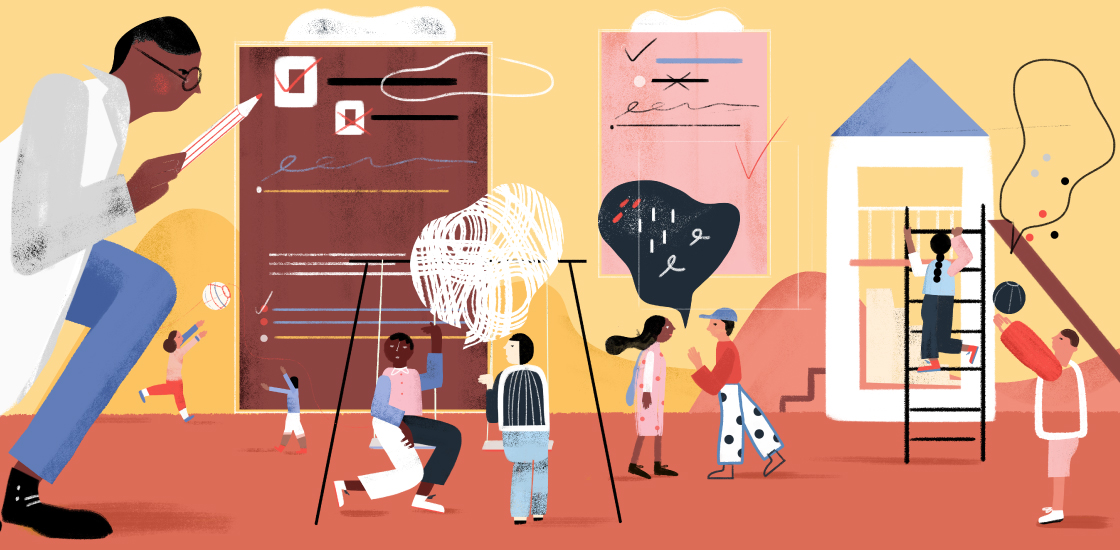Social difficulties have been considered a defining characteristic of autism since Leo Kanner published the first clinical descriptions of the condition in 1943. However, people with autism can show striking variability in social function: Some lack social interest and awareness of other people and have a limited ability to communicate. Others are keenly interested in forming social bonds and readily communicate their needs, thoughts and emotions.
Given these differences, not every person with autism has the same intervention needs — and different supports are more or less effective depending on an individual’s specific pattern of social strengths and limitations.
Despite the clear need to better understand differences in social skills in autism, there have been surprisingly few attempts to identify groups of autistic people with similar profiles of strengths and vulnerabilities. Prior studies, although informative, have mostly focused on particular behaviors and characteristics, without considering other important aspects of social functioning1,2,3.
Navigating the social world requires a range of basic skills that, if impaired, can create the social difficulties we see in people with autism. These skills include social motivation, or the desire to interact and affiliate with others; social communication, or the ability to convey social and emotional information to others through various means, such as eye contact, facial expression, gestures, body language and tone of voice; and social recognition, or the ability to perceive and interpret information communicated by other people.
Researchers and clinicians have several excellent tools at their disposal to diagnose autism and measure its overall severity, but to better understand an autistic person’s strengths and areas of need, they must also be able to measure essential social skills. We developed the Stanford Social Dimensions Scale (SSDS) specifically for this purpose.
We designed the SSDS through an exhaustive review of the literature and in consultation with autism experts and clinicians, and we have shown it is valid and enables a comprehensive assessment of different aspects of social motivation, social communication and social recognition4. We believe this work represents an important step toward uncovering the origins of social difficulties in autism and informing personalized intervention and case management plans for autistic people. We also believe that this work has the potential to be useful and informative for understanding social functioning across other neurodevelopmental and neuropsychiatric conditions as well.
Social profiles:
We used the SSDS in a study of 164 autistic children and adolescents aged between 2 and 17 years. Parents of these children completed the questionnaire and several other measures of their child’s autism traits, anxiety levels and behavioral problems. Using a data-driven approach, we classified participants according to their scores on specific domains of the SSDS, revealing five distinct subgroups5.
The subgroups we identified could be useful to clinicians choosing treatments. For example, one subgroup of autistic people showed strengths in social recognition and motivation but a weakness in expressive communication. This subgroup also experienced high levels of anxiety. These people might benefit from interventions aimed specifically at improving social communication skills and reducing anxiety. A second subgroup showed relative strengths in all domains except social recognition, which might be an area of focus in their treatments.
In addition to the clinical benefits, studying groups of autistic people with similar social profiles may increase researchers’ ability to detect the neurobiological mechanisms underlying particular autism traits. It is possible, if not likely, that specific aspects of social motivation will show mechanisms that are distinct from each other and from social communication processes.
Although promising, our findings are preliminary. We plan to conduct studies that could provide stronger validation of the SSDS and more precise norms, so that we can better identify patterns within individuals relative to their typical peers and other people with autism. Future studies will also need to validate the SSDS using a broader range of assessments, including more objective measures such as eye-tracking. These studies will also need to follow young people from different subgroups over time to capture longer-term trajectories of social behavior. At a basic research level, it will be important to test whether the subgroups we identified show differences in neurobiology and respond to specific interventions.
The SSDS might also be used in people with other neurodevelopmental conditions to better understand their social profiles. Given that most people on the spectrum will show problems across most domains of social functioning, the subgroups we identified might not apply to people with other conditions. This approach aligns with dimensional views of neurodevelopmental conditions, such as the Research Domain Criteria proposed by the National Institute of Mental Health6. Focusing on traits over diagnostic criteria holds significant promise for the development of precision medicine.
Mirko Uljarević is senior research fellow in the School of Psychological Sciences at the University of Melbourne in Victoria, Australia. Thomas W. Frazier is professor of psychology at John Carroll University in University Heights, Ohio.






